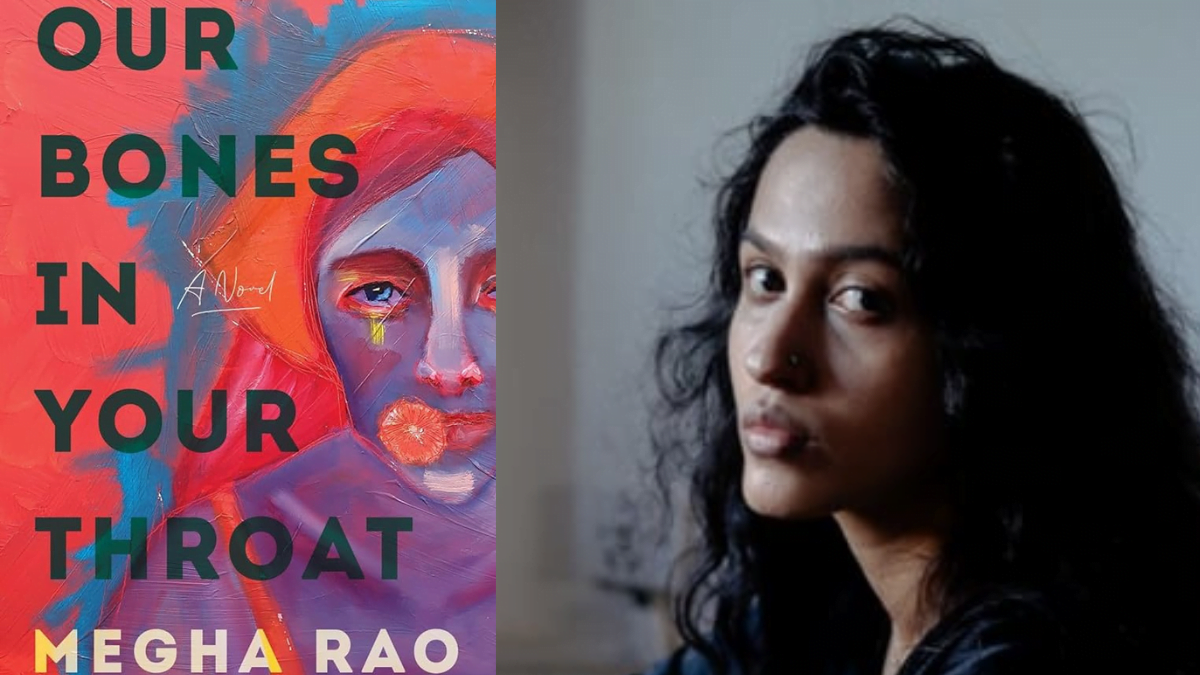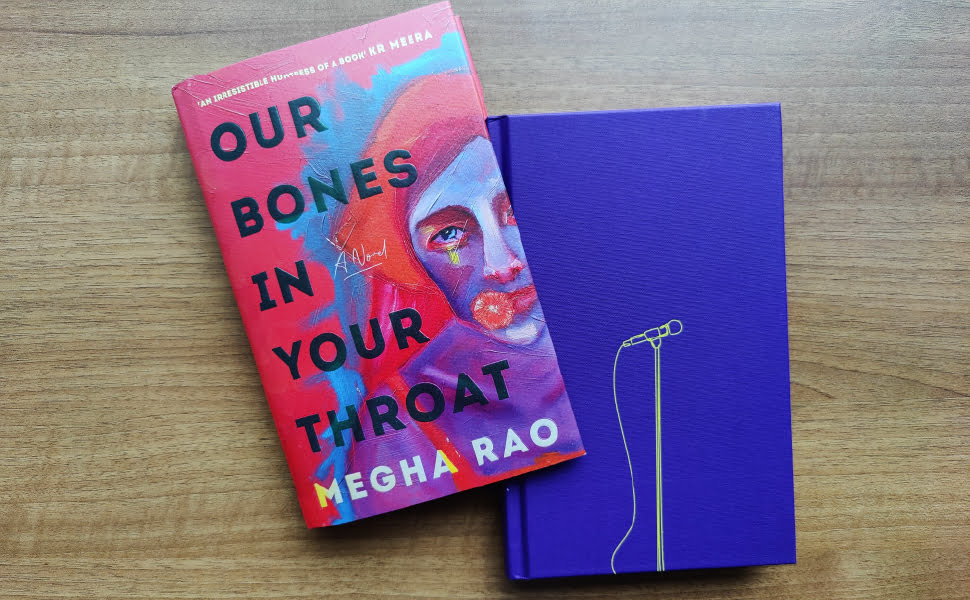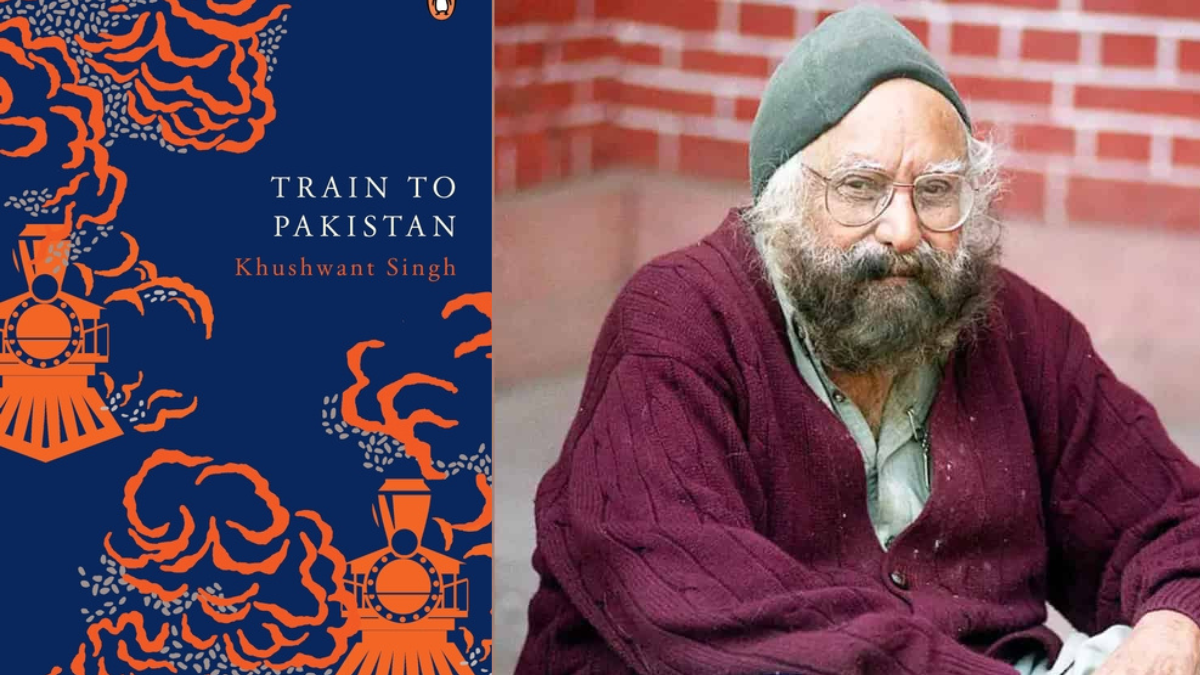Megha Rao’s newest work of fiction published by Simon and Schuster titled Our Bones in Your Throat is a campus novel that reads like a war cry. Essentially, the text is about reclaiming one’s own identity and space. Women who have gone through tremendous trauma in the text, come back stronger and braver, ‘refusing to go down the throats‘ of their abusers. The text is a testament to the individual and collective power of women and activism.
Our Bones in Your Throat: a story of rebellion and reclamation
Reading Our Bones in Your Throat a year after the tragic institutional murder of a first year JU student who died by suicide and at a time when women are being sexually assaulted and raped in their own educational/work spaces as seen in Kolkata’s RG Kar Medical college, lays bare the oppressive systems that such institutions can create and perpetuate.
In Our Bones in Your Throat, we walk with the protagonist, Esai, a new student, through the hallways and lawns of Mumbai’s premiere St Margaret’s College, where a select Cabinet of elite student leaders reign over regular students, often bullying, ragging and tormenting them. When freshers refuse to conform, they are branded as outcasts and harassed by other students.
Reading Our Bones in Your Throat a year after the tragic institutional murder of a first year JU student who died by suicide and at a time when women are being sexually assaulted and raped in their own educational/work spaces as seen in Kolkata’s RG Kar Medical college, lays bare the oppressive systems that such institutions can create and perpetuate.
Esai enters this stifling environment, replete with abusive educators who groom young female students, discriminatory, violent and misogynistic seniors, a power hungry and haughty chair woman and students who have been taught to lower their voices so as to not cause “trouble” for the management. Esai, with her friend and comrade Scheherazade attempt to upturn the status quo in the college through art, activism and their unwavering grit and determination.
The language of the text is lyrical and poetic
Megha Rao is a poet whose raw and effortlessly real poetry on Instagram is evocative, urging readers to explore all the layers within the words. After Teething, the recently released Our Bones in Your Throat is the latest novel by the author. That Rao is a poet speaks through in her prose- her writing is imbued with the lyricism and music of poetry. Rao’s description of mundane everyday occurrences are rich with metaphors, a telltale giveaway that the author is, in fact, a master of poetic diction and language.
One of the most important figures in Our Bones in Your Throat is the performance poet Scheherazade who speaks life into the student protests on campus. Whether it be fighting sexual abuse, unfair grading or partiality at St Margaret’s, Scheher, a firebrand activist, instills vigour into the campus community and movements. Scheher’s rise as a poet and activist from a timid victim of intimate partner violence is what makes Our Bones in Your Throat a story about reclaiming oneself. Scheher literally rises from the ashes like a Phoenix and one could very well argue that it is she who is the life of the story.
Feminist camaraderie and solidarity in Our Bones in Your Throat
Romance plays a role in the text but what is commendable is that it does not take precedence over the bonds of friendship and camaraderie that is so essential to the storyline. Our Bones in Your Throat is replete with stories of feminist solidarities, whether it be the friendship between Scheher and the protagonist, the solidarity extended towards Jewel, a victim of grooming and sexual abuse or the feminist activist community within campus. The text reminds us about the importance of solidarity and friendship in students’ movements.
Our Bones in Your Throat touches on many social topics but illuminates a few. There are some passing mentions about the protagonist Esai’s caste position vis-a-vis Periyar’s self respect movement. However, that is not developed further. Esai’s caste is not made too visible in the text, but her gendered position as a woman with ambiguous parentage, who acts as almost an outcast or a go-between is crucial to the narrative.
Esai’s caste is not made too visible in the text, but her gendered position as a woman with ambiguous parentage, who acts as almost an outcast or a go-between is crucial to the narrative.
Esai is neither here, nor there- neither is she a part of the elite Students’ Union, referred with reverence as ‘The Cabinet’, nor is she accepted as a student protester among campus, until the very end- when a startling revelation puts everything in place. Esai’s identity becomes crucial then and the narrative hinges on this very crux.
Fantasy in fiction: the use of magic and mystery
The use of magical and almost surreal imagery in the invocation of the mysterious Lake Woman is beautiful. The narrative uses the space of the Lake at St Margaret as a vessel of memory where Esai revisits the life of the enigmatic Lake Woman through flashbacks. It is this parallel use of magic and fantasy that transforms Our Bones in Your Throat from a contemporary novel about student activism and young people to something much more.
Our Bones in Your Throat is part fantasy part realist. It uses narrative devices from both genres to create a story about feminist reclamation, solidarity and activism in an oppressive, patriarchal campus structure. It is this seamless commingling of genres that make it a text which attempts to stir the readers. Lyrical, evocative and haunting, Our Bones in Your Throat ultimately like all good art, ‘comforts the disturbed and disturbs the comfortable‘.
About the author(s)
Ananya Ray has completed her Masters in English from Jadavpur University, Kolkata, India. A published poet, intersectional activist and academic author, she has a keen interest in gender, politics and Postcolonialism.







